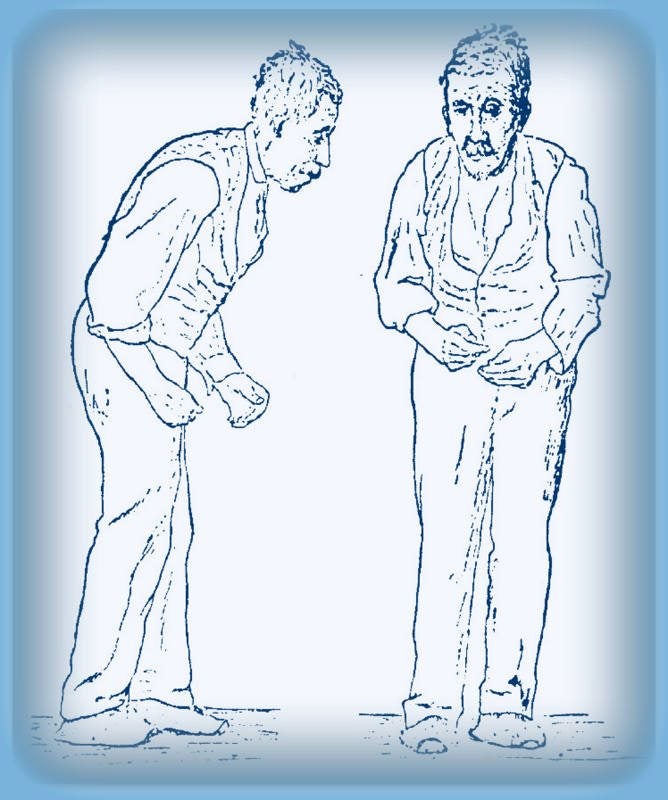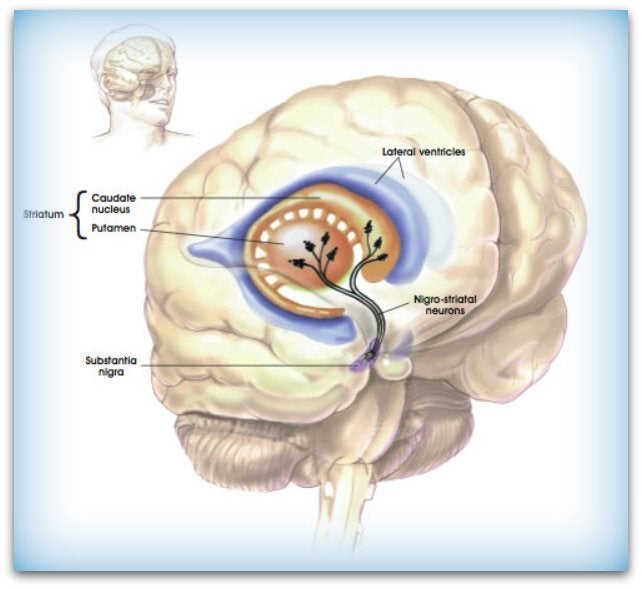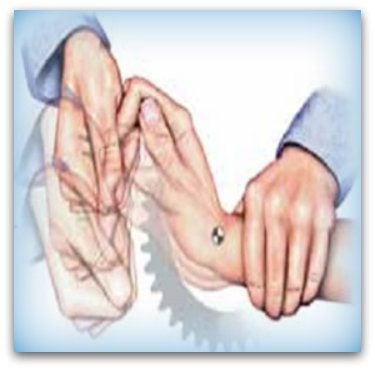Parkinson's disease
Introduction:
Parkinson's disease is a degenerative disorder of the central nervous system. The earliest symptoms are related to movement including a tremor, rigidity, slow movements and difficulty walking. Later symptoms can include thinking, sleep, emotional and behavioral problems including dementia.

This is the most common picture when you think of someone with PD; Parkinson's disease is a chronic disorder, which usually begins between the 45th and 60th year of life. However, there are also young people with this disease.
Brain disease
Parkinson’s involves the malfunction and death of vital nerve cells in the brain, called neurons. Parkinson's primarily affects neurons in the an area of the brain called the substantia nigra. Some of these dying neurons produce dopamine, a chemical that sends messages to the part of the brain that controls movement and coordination. As PD progresses, the amount of dopamine produced in the brain decreases.

The degeneration (breakdown) of black nuclei (substantia nigra) that produce dopamine. (drawing above) The basal ganglia and these black nuclei (substantia nigra) in the brains play a very important role in the smooth running of movements. They provide normal motion, an effortless start and a good control of the movement and a normal termination of the movement.
Dopamine deficit
For a movement, it is necessary that the muscle that will carry out the movement, is given a stimulus. If the amount of domapine decreases, the muscles are not ready to move. They freeze, slow or do not move at all. Furthermore, the loss of dopamine causes the neurons in the basal ganglia to fire randomly accounting for involuntary movements.
Acetylcholine dopamine balance
Acetylcholine is another neurotransmitter that is needed to produce smooth movements. In normal individuals there is a balance between acetylcholine and dopamine. In Parkinson's patients there is not sufficient dopamine to maintain the balance with acetylcholine. This irregular disproportion results in a lack of movement coordination leading to the more overt symptoms of Parkinson's. Trembling is probably due to an excess of acetylcholine.

Typical Cogwheel rigidity ↑
Cogwheel-rigidity
This refers to the cogwheel-like jerk responses of body muscles when force is applied while bending a limb. This does not happen in normal circumstances. It is a common occurence among patients's suffering from Parkinson's disease.
Beginning of the disease
The beginning of the Parkinson's disease is not always recognized as the health problems are not always distinctive. People can already have bothersome symptoms over a period of years of constipation, anemia and moving slower or having olfactory disorders. Some people find that they can not turn over in bed properly. Gradually symptoms become progressively worse like having rigid muscles, shaking or falling without cause.
The diagnosis is made if the signs and symptoms match the 'hypokinetic-rigid syndrome. That means, among other, a decrease in movements such as decreased expression and decreased arm swing, rigidity and tremors that occur at rest. Also posture and movement disorders. Many diseases that resemble the symptoms and pathology in Parkinson's. The disorders that resemble Parkinson's disease are called atypical parkinsonisms for instance vascular parkinsonism and multiple system atrophy (MSA) and progressive supranuclear palsy (PSP).
Possible Symptoms
The specific group of symptoms that an individual experiences varies from person to person. Also, the severity of the symptoms varies from person to person.
- tremor restingtremors of the hands, arms, legs, jaw, tongue and face
- bradykinesia or slowness of movement
- rigidity or stiffness of the limbs and trunk, because the muscles are constantly a little tightened
- postural instability or impaired balance and coordination
- difficulty in starting a movement (akinesia)
- lack of automatic movements (hypokinesia)
- 'freezing' of the legs while walking, usually a few seconds and again
There also may be problems with balance and vision, olfactory dysfunction and an expressionless face (mask face) by the increased tension of the facial muscles, constipation, difficulty chewing and swallowing, delayed gastric emptying, sleep and mood problems such as depression and changes in sexual desire.
Sometimes a reduced distinction from other people's facial expressions and interpretation of intonation in the voice of someone else is seen.
Find out more by reading detailed descriptions of Parkinson's symptoms below:
On Off On-freezing phenomena Freezing (Freezing of Gait FOG)
Freezing of gait (FOG) refers to transient episodes, usually lasting seconds, in which a patient is unable to initiate or continue locomotion, especially while turning, in stressful time-constrained situations and upon entrance into and through confined spaces such as doorways occurring on a background of relatively good ability to move and is best described by patients as “feet get glued to the ground.”
Parkinsonian gait is characterized by small shuffling steps and a general slowness of movement (hypokinesia), or even the total loss of movement (akinesia) in the extreme cases.Patients with PD demonstrate reduced stride length and walking speed during free ambulation while double support duration and cadence rate are increased.The patient has difficulty starting, but also has difficulty stopping after starting. This is due to muscle hypertonicity.
Rhythmic stimuli can help to get out of that 'freezing' such as walking to the beat of a ticking sound. Or as some people have invented, step on the light of a laser pointer, which is stuck at the bottom of the walker; smart solutions from practice!
Physiotherapy
Parkinson's patients who move frequently and intensively feel fitter and do not seem to fall more often. The hope of sports scientists and physiotherapists is that exercise helps to slow the decline. It is important to alternate movements with other movements, to vary as in dancing or Nordic walking.
Research shows that exercise can stimulate the production of nervecells, which in turn may be associated with an improvement in short-term memory and spatial memory:
Movement can stimulate the formation of new neurons in the brains (hippocampus). This is accompanied by an improvement in short-term memory and spatial memory. Research shows that exercise-induced neurogenesis may be a mechanism that limits brain damage. Neuroscience, 209, 177, No. 17, March 2011, F. Zhang et al
Medicine en nutrition
Parkinson's disease is not yet curable, it is neither proven that medicine can stop or delay the physical decline. 90% of Parkinson's patients takes a drug that is absorbed by the brains and is converted there to dopamine, levodopa (L-dopa). The standard preparations (Sinemet, Atamet) combine levodopa with carbidopa, which improves the action of levodopa and reduces some of its side effects, particularly nausea. In general L-dopa has the following effects on Parkinson's disease:
- It is most effective against rigidity and slowness.
- It produces less benefit for tremor, balance, and gait.
In many patients, levodopa significantly improves the quality of life for many years. But it has a lot of side effects...
Dopamine antagonists, mimic the activity of dopamine after rather than replace such as Levodopa is doing it.
Nutrition:
Proteins in food such as meat and dairy products inhibit the absorption and effect of Levodopa and eating less protein, therefore, would be sensible. Request a consultation with a dietician!
Information on Parkinson's
-
Understanding Parkinson's
-
Treating Parkinson's
-
Living with Parkinson's
-
Managing Parkinson's
-
Keys to Parkinson's
- Parkinson's Voice Initiative (studies using voice)
- FamilyAssets guide on Parkinson's
The following websites are specialized on this subject; learn more:
- Parkinson's UK
- Parkinson's USA
-
Parkinson's Disease Information Page: National Institute of Neurological Disorders and stroke
- Sixty and Me
Resources: Prof.B Bloem UMC st Radboud Nijmegen and physiotherapist movement scientist Nijkrake, multidisciplinary guide lines Parkinson. Diagnosis and treatment of patients with PD of the Dutch Society of Neurology (NVN 2001) Nursing and care of people with Parkinson Dutch Association of Neuro Nurses and Carers (V & VN, 2001)
Parkinson's Disease 'by the Royal Dutch Society for Physical Therapy (KNGF, 2004) Parkinson's Disease Foundation